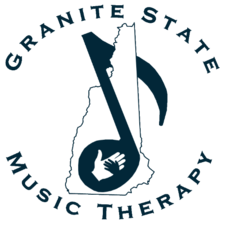An MT’s Reflection in the Throes of Flu Season
I had some kind of sickness that was going around for the better part of the week. I couldn’t even talk on Monday, much less sing, but by the end of the week, my voice was pretty much back. I still couldn’t sing though, not really, and definitely not well enough to sing all day long for 9 music groups in a row. I wasn’t sick anymore though, so I had to devise a plan.
Adapting to a New Need, Mine
I decided to utilize recorded music. I hesitated, because I don’t like to use recorded music during sessions. I don’t like the awkward pause while I open my phone, and I don’t like having to deal with a Bluetooth speaker, but I knew in this case I had to make it work. I also do not like to make too many changes to my sessions all at once. I like to use the same “hello” and “goodbye” songs, and then within the “safe container” as us music therapists call it, I make changes because it is already sandwiched in between two things that are familiar. But I really had no choice. The songs I usually use were not easy to find, at least not in the way I did them, and wouldn’t work as a recorded song. I can’t control the speed, and often children’s songs are too fast for the developmental level they are meant for. I also hadn’t gotten a chance to gradually work recorded music into our sessions. But I needed to save my voice and make it work somehow. It was a quite literal “you need to fill your own cup before filling others’” sort of situation. I knew if I sang at all, by the end of the day I wouldn’t have a voice at all for the other groups of students.
A Lesson in Flexibility
So, I started the day and the students seemed thrown off that I didn’t have my guitar. I had to guide them to their chairs and turn over my phone, (even a Spotify playlist I guess is intriguing!) and the music began to come out of my portable speakers. It threw off some of the students. I told them, “it’s okay, today is a good lesson in flexibility!” I wasn’t sure who I was trying to convince more, them or myself. But as I was offering comforting words, I realized what a great opportunity it really was. They were in a safe, familiar space, and they were facing feelings coming up dealing with change, unpredictability, learning something new, etc.
Internalized Pressure
I think so often as music therapists, we put pressure on ourselves to make everything go smoothly. Especially when leading a group, we feel as though we are the captain of the ship and need to single-handedly steer it to the safety of the shore. But in this case, I realized the students were already feeling safe in the boat! They were also my guides, showing me what was working and what wasn’t from moment to moment. Maybe the boat appeared different at first, but the journey was the same.
The Safe Container
It was almost lunch time and I was pretty happy with how the day was going so far, but then a staff member aid something that really stuck with me. She said, “it’s not the music, it’s you.” One of my little friends in the group was waving his arms excitedly like he usually does, even though the music was different. Here I was, so worried that the safe container wouldn’t be fully developed because I would have a different “hello” and “goodbye” song “the bread of the sandwich), but I realized I had already made the safe container. My presence and me just being there, was carrying that safe container music therapists strive to create every time. A safe place, created with music, where clients are free to express themselves, learn without judgement, try something new, and make mistakes.
A Takeaway
The lovely staff member’s comment brought me right back to the foundation of music therapy. It’s right there, in the definition. According to the AMTA, Music Therapy is the clinical & evidence-based use of music interventions to accomplish individualized goals within a therapeutic relationship by a credentialed professional who has completed an approved music therapy program. I think sometimes we get so wrapped up in the goals, we forget the “within a therapeutic relationship” part, which is really at the heart of any music therapy session. Sometimes it isn’t the music, it’s you!
Author: Jenni Chute, MA, MT-BC
Editor: Sonya Imperio, MT-BC
Stay up-to-date with our latest resources!
Sign up for our newsletter!
We value your privacy.






